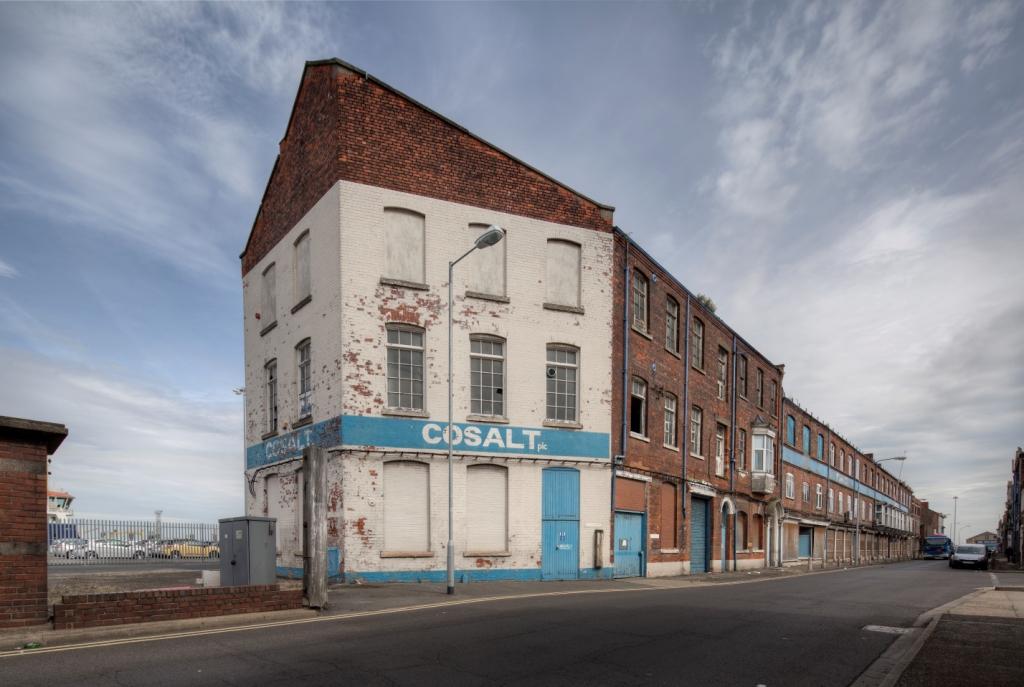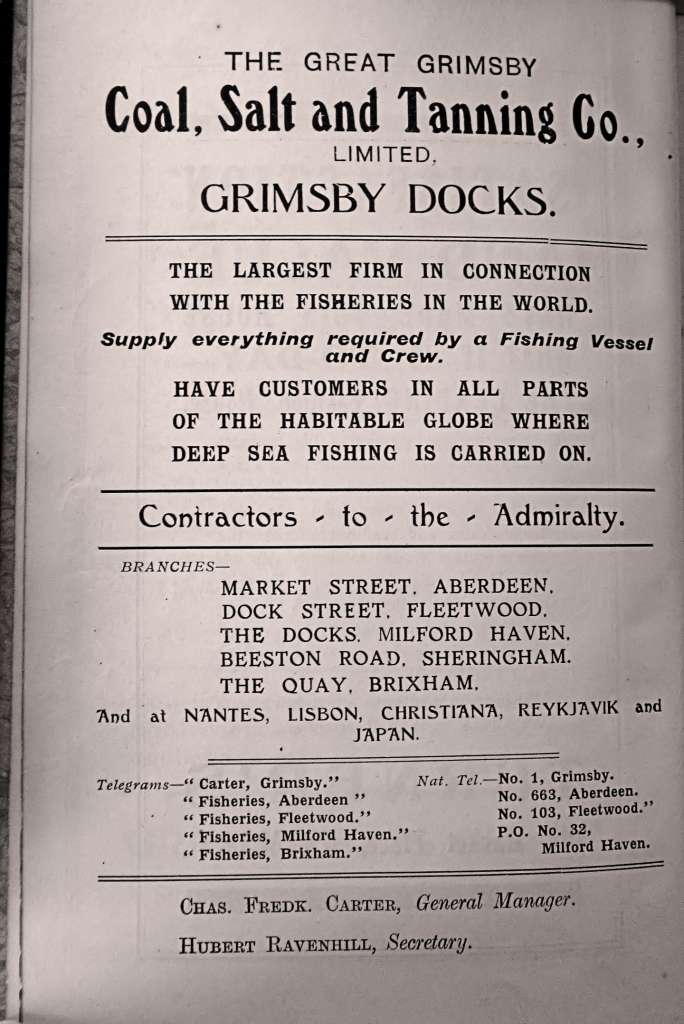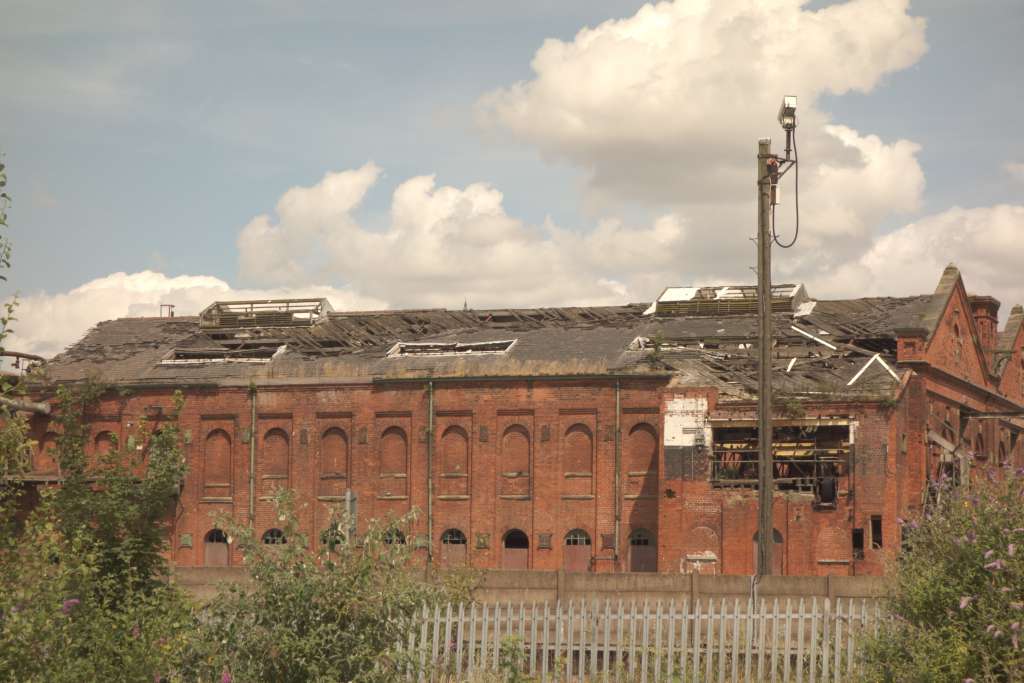Press release: ‘Stop the Rot’: SAVE calls for urgent action to revive and regenerate historic buildings at Grimsby docks and steps back from legal challenge
26 July 2016
‘Stop the Rot’: SAVE calls for urgent action to revive and regenerate historic buildings at Grimsby docks and steps back from legal challenge
With the greatest reluctance SAVE has decided that it cannot pursue its court challenge on the historic Cosalt buildings at Grimsby Docks further due to escalating costs. The decision not to pursue the legal challenge follows a ruling from the Court of Appeal at the end of last week refusing SAVE permission to proceed with the case. Whilst there is an option to continue with an oral hearing, this will add considerably to our costs and so we have decided not to continue with the challenge.
SAVE nonetheless remains extremely concerned about the imminent threat to the Cosalt buildings, and the impact that the demolition will have on the wider historic Kasbah area of Grimsby Docks, which has been stated by Historic England to be unique in the world. Our campaign to highlight the threats to these buildings, and others in the area, continues.
We are calling on North East Lincolnshire Council and the building owners Associated British Ports to act now to revive and regenerate the existing historic buildings on the dock – including the grade II* listed Ice Factory - which lies next to the Cosalt Buildings and in a serious state of decay. Urgent repairs are required before it and other buildings fall into an even worse state of repair.
Henrietta Billings, Director of SAVE Britain’s Heritage says, “The neighbouring grade II* listed Ice Factory is empty, boarded up with large holes in its roof, and many of the buildings in the Kasbah are in clear need of maintenance and repair. We are calling on the owners Associated British Ports, and the Local Planning Authority North East Lincolnshire Council to stop the rot and take urgent action to safeguard the future for the remaining historic buildings on the docks.
“A strategic masterplan for the area is urgently needed – to ensure that Grimsby’s heritage assets are regenerated and revived alongside new development. The historic Kasbah buildings and the Ice Factory have the potential to become a cultural, business and tourist destination like Gloucester or Liverpool docks and bring great benefits to the economy of the area. The demolition as proposed by ABP is short term, irreversible and unnecessary and if everything is left to rot and decay – in a few years there will be very little of Grimsby's great fishing heritage left.”
Marcus Binney, President of SAVE Britain’s Heritage says, “Visiting the docks last week we were astonished to find large gaping holes in the roof of the Ice Factory. Associated British Ports claim they take their architectural heritage seriously, yet nothing appears to have been done to stop rain pouring in through the roof. This constitutes the most callous neglect of an outstanding listed building we have seen in years”.
Our campaign to save the buildings is supported by World Monuments Fund, The Prince’s Regeneration Trust, The Victorian Society, Great Grimsby Ice Factory Trust and the Grimsby Traditional Fish Smokers Group. We have received strong public support and fundraised £2,000 towards our costs to date for the legal challenge.
The historic Cosalt buildings are set to be demolished to make way for open storage of wind turbines, although insufficient justification has been put forward as to why the storage is required in this location, or why the buildings have to be demolished given the extensive area of land to the rear of the buildings.
SAVE also maintains that the demolition of the lively, varied and well-detailed buildings known as the Cosalt buildings will destroy the setting and the context of the listed buildings on the other side of Fish Dock Road. One whole side of the street will be demolished leaving buildings which fronted a street now fronting an open storage area. This radical change is one which national policy states should be taken into account when considering planning applications.
The few remaining groups of historic buildings known as the Kasbah and the grade II* listed Ice Factory constitute a unique and irreplaceable testimony to Grimsby’s position over two centuries as the greatest fishing port in the world. Remarkably a small number of historic buildings in the Kasbah remain in constant use, notably as traditional family owned smokeries which supply leading hotels and restaurants.
Richard Enderby, Chairman of The Grimsby Traditional Fish Smokers Group highlighted the need to regenerate the area – and make use of the existing buildings to help revive the docks. He said: “From once being described as a town within a town because everything you needed was at hand such as shops, cafes and banks, there are now none of these left on Grimsby docks.
“It is good that the renewable industries are being attracted to the area but they might shun the docks because of its present state. The staff working in any renewables firm on the docks will need cafes, restaurants and shops close by to meet at or have lunch. A renovated Kasbah is the perfect place for this.
“Also the most successful and popular visitor attractions still on the fish docks are seafood retailers and the traditional smokehouses selling to the public. These specialist artisan producers are unique to Grimsby and attract visitors from far and wide. To make their journey complete other artisan producers need to join them and occupy the many empty buildings that stand adjacent to the thriving smokehouses.”
Note to Editors:
1. For more information please contact Henrietta Billings, Director, on 0207 253 3500 or Henrietta.billings@savebritainsheritage.org
2. The Great Grimsby Coal, Salt and Tanning Co., Limited (Coal Salt) was formed in 1873 as a co-operative of fishing vessel owners, to supply products and services needed by the fishing industry. Coal Salt was the most important company of its type in the world.
3. Permission for demolition of the Cosalt buildings was granted by North East Lincolnshire Council in May 2016. In their decision to grant approval, the Council had assessed that the demolition would not be likely to have a significant effect on the environment so no formal Environmental Impact Assessment (EIA) would be required as the buildings to be demolished were unlisted and not in a Conservation Area. However SAVE argued that the Council failed to take into account the effect of the removal of a historic street on the setting of the surrounding listed buildings. SAVE also argued that the Council failed to deal with Historic England’s assessment that the demolition would have a significant environmental impact
4. SAVE is advised on this case by Susan Ring at Harrison Grant LLP, solicitors, and John Steel QC.
5. SAVE Britain’s Heritage has been campaigning for historic buildings since its formation in 1975 by a group of architectural historians, writers, journalists and planners. It is a strong, independent voice in conservation, free to respond rapidly to emergencies and to speak out loud for the historic built environment.
Press release issued by SAVE Britain’s Heritage
70 Cowcross Street, London EC1M 6EJ
Registered Charity 269129
Tel. 020 7253 3500 Email office@savebritainsheritage.org
Follow SAVE on Twitter: @SAVEBrit
Donate to SAVE via Justgiving



